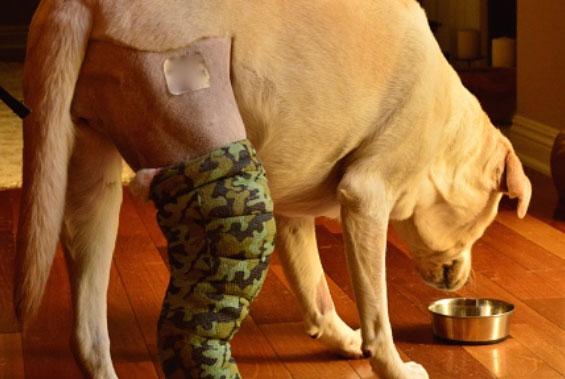Cruciate disease is the most common cause of chronic hindlimb lameness in dogs. This injury commonly requires complex surgery to stabilise the problematic knee.
At SGV our surgeons have extensive experience with many forms of cranial cruciate surgery. Depending on your pet’s size and conformation, our vets will recommend the operation which will most likely result in return to normal function on the leg.
These surgeries include lateral sutures (De Angelis Procedure), Modified Marque Procedure (MMP) and Tibial Plateau Levelling Osteotomy (TPLO). These surgeries are all available at SGV.

Cruciate surgery is a surgical procedure performed on dogs to repair a ruptured or torn cranial cruciate ligament (CCL), which is similar to the anterior cruciate ligament (ACL) in humans. The CCL is one of the main stabilising ligaments in a dog's knee joint and is commonly injured, particularly in certain breeds and in overweight or obese dogs.
There are several surgical options for cruciate surgery in dogs, including:
-
Tibial plateau leveling osteotomy (TPLO): This surgery involves cutting and reshaping the top of the tibia bone to change the angle of the knee joint, reducing the need for the CCL to provide stability.
-
Extracapsular repair: This involves placing a suture outside the joint to stabilize the knee and replace the function of the damaged ligament.
-
Tightrope procedure: This is a newer technique that uses a special implant to stabilize the joint and provide support without the need for a bulky surgical suture.
The specific surgical technique used will depend on the size and breed of your dog, as well as the severity of the injury.
Recovery from cruciate surgery can take several months, during which your dog may need to be restricted from physical activity and require physical therapy. Your veterinarian will provide specific instructions for postoperative care and rehabilitation.
It's important to note that not all dogs with a torn or ruptured CCL will require surgery. In some cases, conservative management, such as rest, pain management, and physical therapy, may be sufficient. Your veterinarian can help determine the best course of treatment for your dog based on their individual needs and circumstances.

